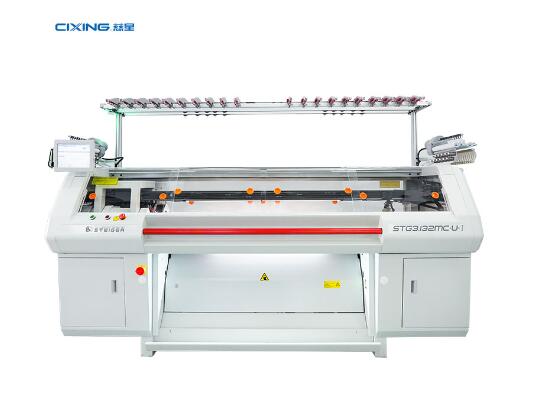Unraveling the Threads: Understanding the Distinction of Fabric Textile Knitting Machines
2023-12-20
Introduction:
In the vast landscape of textile manufacturing, the choice of machinery plays a pivotal role in determining the characteristics and quality of the end product. Fabric textile knitting machines stand as distinct players in this realm, weaving a unique tapestry of fabrics compared to other textile manufacturing machines. In this blog post, we'll unravel the threads of how fabric textile knitting machines differ from their counterparts in the textile industry.
1. Knitting vs. Weaving: A Fundamental Distinction:
- Fabric textile knitting machines specialize in the process of knitting, a technique that interlaces yarn to create a fabric.
- Unlike weaving machines, which interlace yarns at right angles, knitting machines create fabrics by forming loops of yarn.
2. Formation of Fabric: Loop by Loop:
- Fabric textile knitting machines form fabrics by looping yarn in a continuous manner.
- The process involves creating rows of interconnected loops, offering flexibility and stretch in the resulting fabric.
3. Versatility in Fabric Types: From Jersey to Ribbed:
- Knitting machines can produce a wide range of fabrics, including jersey, ribbed, cable-knit, and more.
- This versatility allows for the creation of fabrics with diverse textures, thicknesses, and stretch characteristics.
4. Yarn Usage: Continuous Threads in Motion:
- Fabric textile knitting machines use continuous yarn threads, with the knitting process forming a cohesive and integrated fabric structure.
- Unlike weaving machines that involve the use of warp and weft yarns, knitting machines utilize a single thread to create interconnected loops.
5. Texture and Stretch: Inherent Characteristics of Knitted Fabrics:
- Knitted fabrics exhibit inherent stretch and flexibility due to the interlooping structure.
- This characteristic makes knitted fabrics well-suited for applications where comfort and movement are essential.
6. Speed and Efficiency: Rapid Loop Formation:
- Fabric textile knitting machines are known for their efficiency in rapidly forming loops, allowing for high-speed production.
- This efficiency is particularly advantageous in industries where quick turnaround times are crucial.
7. Adaptability to Complex Designs: Patterns Beyond the Grid:
- Knitting machines excel in producing intricate patterns and designs, going beyond the geometric limitations of traditional woven fabrics.
- This adaptability to complex designs is a notable feature of fabric textile knitting machines.
8. Circular and Flat Configurations: Tailoring to Applications:
- Fabric knitting machines come in circular and flat configurations, each serving specific applications.
- Circular knitting machines are suitable for producing seamless tubular fabrics, while flat knitting machines are adept at creating panels and intricate patterns.
Conclusion:
In the grand tapestry of textile manufacturing, fabric textile knitting machines stand out as dynamic artisans, weaving fabrics loop by loop with precision and versatility. The distinction lies not just in the technique of knitting but in the unique characteristics and applications that knitted fabrics bring to industries ranging from fashion to sports. As technology continues to advance, the role of fabric textile knitting machines in shaping the textile landscape will undoubtedly continue to evolve, offering endless possibilities for creativity and innovation in the world of fabrics.



